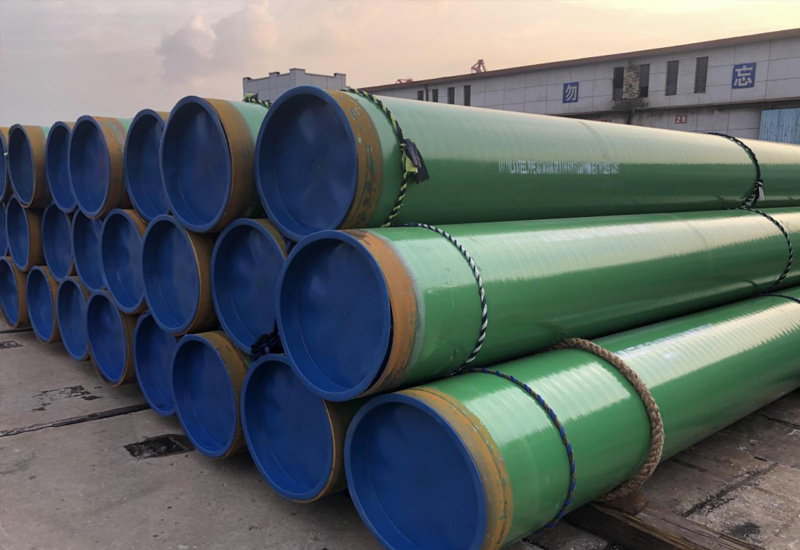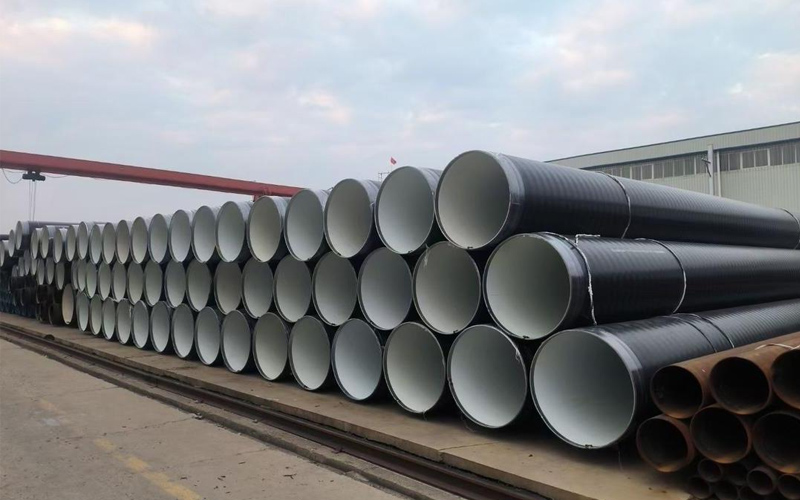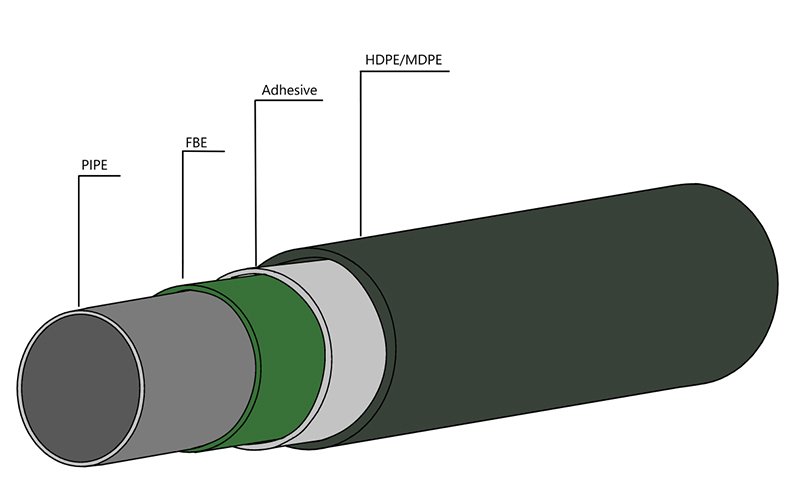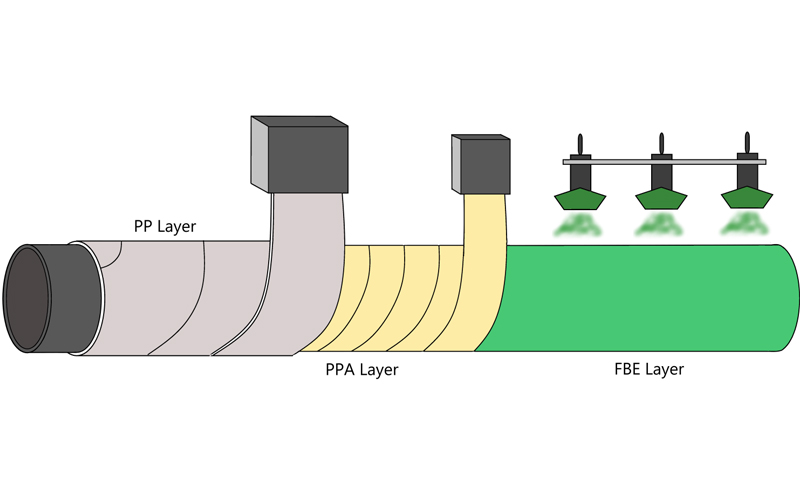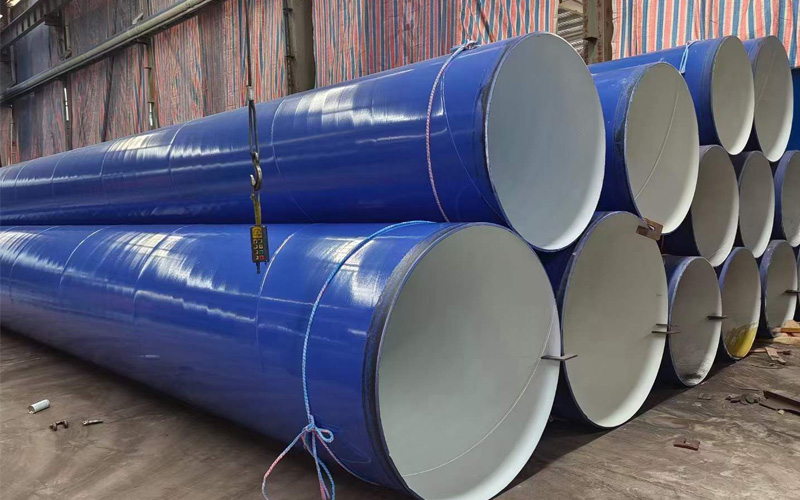What is Large Diameter LSAW Pipe?
Introduction
As a project manager, engineer or buyer for a large construction project, you are shopping for critical materials. Your requirements are for large diameter steel pipe for an oil and gas pipeline, off-shore platform or a major water transmission system. In the tech papers, the acronym “LSAW” is what you find. It’s a kind of heavy-duty pipe, but you’re not quite sure what that means to your cost for lsaw pipe, or the quality of your project, or how long you’ll have to wait to get it.
This not knowing breeds a big risk for the project. Selecting the wrong pipe or not understanding the specifications you have paid for can cause cost over runs or even worse non-compliant product that that may cause catastrophic failure. The secret of success in Lsaw steel pipe is that it is an excellent option for heavy-duty engineering applications, and its manufacturing process and the specifications used for it are the major factors that affect its price and performance.
This guide will tell you all you require to know about lsaw pipe. We will go far beyond a brief description to bring you a full-blown Cost & Specification Guide designed for buyers. We’ll review the processes that determine your lsaw pipe price, explain the specifications that dictate quality and offer you a framework so you can buy lsaw pipe with confidence.
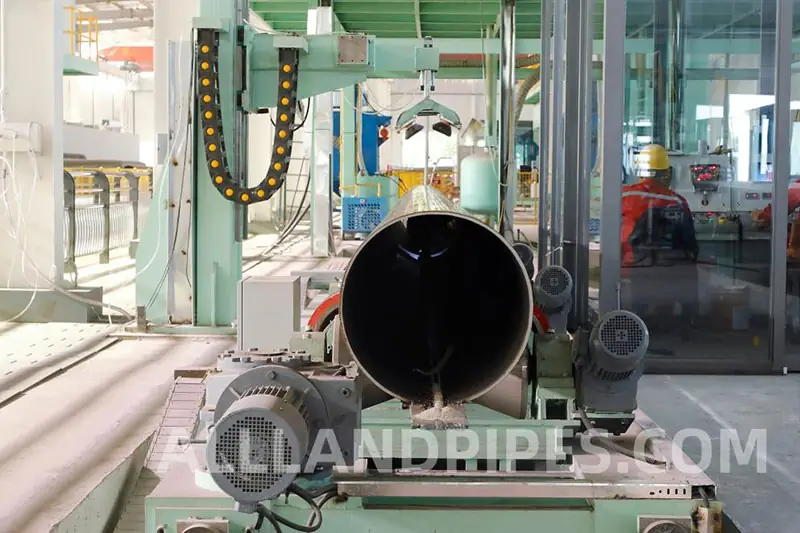
What is Large Diameter LSAW Pipe?
The LSAW pipe is also called the DSAW pipe and it is divided into two processes from production angle, which is single submerged arc welding and double submerged arc welding. What is lsaw? It is Longitudinal Submerged Arc Welded.
These are the three most important properties of this product. “Longitudinal” refers to that the pipe only has one single straight (longitudinal) weld seam which is parallel with the pipe axis along the length of the pipe surface (For large diameter pipes, composite welding with two seams are allowed but they should be still used along the pipe axis). This is the shortest possible weld path for a fabricated pipe, which is a key advantage for structural integrity. “Submerged Arc” – When making the seam, DSAW (Double Submerged Arc Welding) method is used, which is one of the highest quality processes in which the welding arc is hidden under a layer of granular flux, producing a weld that is extremely clean and strong. Lastly, its “Raw Material” is a single discrete steel plate, not a roll of steel coil. This permits thicker, higher strength steel plates to be used initially.
How the LSAW Pipe Manufacturing Process Impacts Your Specs and Cost
The forming process—how that flat plate is turned into a cylinder—is a critical lsaw pipe cost factor and determines a manufacturer’s flexibility. There are two primary methods:
The JCOE (J-ing, C-ing, O-ing, Expanding) Process
This is flexibility in manufacturing. The plate is first pressed by the machine edges to get a “J” shape, then a “C” press progressively “stamps” the plate and an “O” press finishes the cylinder. This process could be considered as very flexible and hence the best selection for custom or non-standard diameters, very thick walls (up to 100mm / 4 inches) and small specialized orders.However, it is a slower, more deliberate process, which can lead to a higher unit price on large, standardized orders.
The UOE (U-ing, O-ing, Expanding) Process
Now here is the high-efficiency production route. The plate is shaped in two enormous strokes: a “U” press followed by an “O” press. This process is very fast and effective, so it is best suited to mass production of large, standardized orders. Such a high throughput means that the cost per ton for bulk orders is reduced.However, its dedicated tooling is non-scalable and so it cannot be used for small or customized batches.
A Buyer’s Guide to LSAW Pipe Specifications & Cost Factors
The price of the LSAW pipe is influenced by the specification when you buying LSAW pipe. Here is what affects the cost of your LSAW pipe.
Standard & Grade
This is the most important consideration. The level of testing and quality assurance that you require is governed by the specification, which is the biggest non tangible cost.
A Low-Cost Spec ( Such as ASTM A252 Grade 3) is a specification for a steel foundation pile. This is an inexpensive product. Its chemistries are fairly loose, and there are no mandatory requirements for hydrostatic testing, NDT, or fracture toughness.It’s made to be pounded into the ground, not to maintain pressure.
High Strength/High Specification (like API 5L X70 PSL2) is an internationally recognized specification for energy pipelines. This is a high failure cost, high confidence product. You’re buying into a long list of mandatory, costly tests to ensure safety, as stipulated under the API 5L standard for lsaw pipe. This involves mandatory Charpy V-notch (CVN) testing (one of the main add-ons costs), 100% NDT on the entire weld line, a full hydrostatic test for each pipe and much more strict controls on steel chemistry.And when you purchase API 5L PSL2, you’re not just purchasing pipe — you’re buying proof and assurance.
Wall Thickness: The Weight Factor
LSAW steel pipe is calculated by weight (ton). The wall thickness is the single largest weight contributor. The LSAW process is particularly suitable for thick-walled pipe. It’s a simple trade-off: a 40mm (1.57″) wall pipe will have almost twice as much steel as a 20mm (0.79″) wall pipe. You may be charged the same amount per ton for your price, but the cost of the project will be twice as much.
Diameter: The Logistics Factor
The cost of production and logistics is scaled massively when considering large diameter LSAW pipe, particularly in sizes over 60 inches (1500mm).Production requires larger presses, and transport involves special trucks, road permits and special attention at the port.This freight equalization charge can be a substantial portion of your ending price.
Key LSAW Characteristics (Character) & Value
This table summarizes why an engineer specifies LSAW pipe. The “Character” is the technical feature; the “Value” is the cost or safety benefit this provides to you, the buyer.
| Characteristic (Character) | Specification (The “How”) | Value to Buyer (The “Why”) |
| High Reliability & Safety | Shortest possible longitudinal weld seam (vs. spiral); 100% NDT inspection per API 5L. | The best choice for critical, high-pressure oil & gas lines where failure is not an option. |
| Thick Wall Capability | Formed from heavy steel plate (not coil) via JCOE/UOE. Can produce walls up to 4″ (100mm) thick. | The only viable option for extreme-duty applications like deep-sea platforms or high-stress structural nodes. |
| High Dimensional Accuracy | The final Mechanical Expansion step in JCOE/UOE guarantees precise OD tolerance and roundness. | Lowers your total project cost by reducing field welding and fit-up time. Faster, easier construction. |
| Flexible & Optimized Supply | Choice of JCOE (flexibility) or UOE (efficiency) manufacturing processes. | Allows you to optimize your cost. You can buy from a JCOE mill for custom specs, or a UOE mill for bulk order savings. |
Conclusion
What is lsaw pipe It is the high-end quality, most reliable engineering solution for big-diameter, heavy duty projects. Is it a commodity, and should it be bought like one. With its physical manufacturing process, based on steel plates and a strong DSAW weld, it’s the preferred choice for usages where safety and reliability are the main considerations.
The secret to controlling your LSAW pipe cost is to understand you are not buying a simple commodity. You must compare the specifications you need; for example, a low-cost ASTM A252 LSAW pipe pile and a fully-tested API 5L PSL2 pipeline may look similar, but their testing requirements and costs are vastly different. . The other crucial lesson is mapping your order type (custom vs. bulk) to the correct manufacturer’s process (JCOE vs. UOE). This is the ultimate purchasing strategy: ensuring you get a competitive price for the exact specification your project requires.
Frequently Asked Questions (FAQ)
Q1: What is the main price difference between LSAW and SSAW pipe?
A1: The price of LSAW pipe is usually more expensive than that of SSAW (Spiral Welded) pipe. This is due to the fact that the LSAW production method (using individual plates and JCOE/UOE forming) is more complicated and slower than the continuous coil-based spiral method. But for high pressure or critical structural applications, LSAW is the best option because of its reduced weld seam and high quality plate material.Its extended service life often outs the initial expense.
Q2: Can I buy lsaw pipe in small quantities?
A2: Yes, but you have to get the right manufacturer. A UOE mill is designed for high volume production and will likely not accept a small order. You need to contact a best lsaw pipe manufacturer running a JCOE line. The JCOE is a very flexible process and can accommodate small runs or custom dimensions economically.The cost per ton per unit might be higher compared to a bulk order, but if you want to buy in little quantity, it is your only option.
Q3: What specs must I provide to get an accurate price for LSAW pipe?
A3: For a quick and accurate lsaw pipe price quoting and no delay, at least the following information is required: Standard & Grade (API 5L X65), Size (ODxWTxLength), Quantity, End Finish (Beveled, Face, Square, etc.), Coating Requirement(s) (3LPE, FBE, etc.).
Get Your Custom Steel Pipe Quote Today!
Provide us with your project details (like application, specifications, quantity). Our experienced team will respond with a tailored solution and competitive quote within 24 business hours.
Related Articles
ASTM A53 vs. API 5L: A Guide to Selection and Application
Introduction:Technology differences determine success or failure, and selection needs to be “precise”
Steel Density Analysis: Core Differences between Mild and Medium Carbon Steels and Industrial Applications
3LPE coated steel pipe: a solid barrier in the field of industrial corrosion protection
3LPP coated pipe: anti-corrosion guard in high temperature and high pressure environment
FBE steel pipe: the technological armor of the steel defense line
HOT TAGS
latest posts
- 3LPE coated steel pipe: a solid barrier in the field of industrial corrosion protection
- Breakthrough of spiral welded pipe technology: How does SSAW steel pipe conquer the water supply project in rugged mountain areas of South America?
- What is offshore pipeline and its Applications in offshore oil and gas development
- 3PP Coating for High-Temp Pipe Corrosion | Case Study
- A Guide to ISO 21809: 3LPE & FBE Pipe Coating Standards




